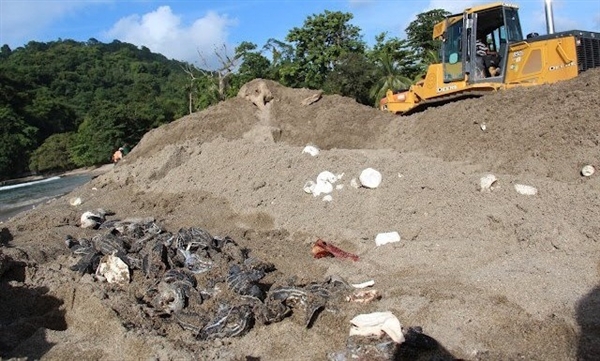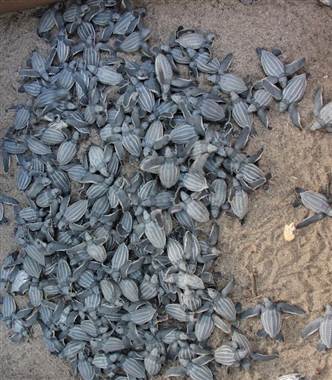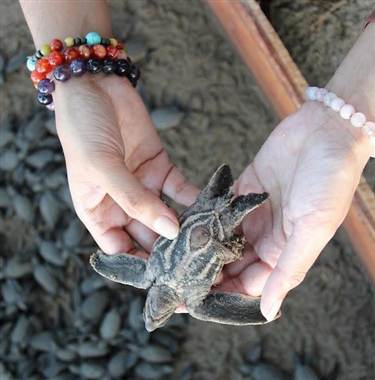Divetalking » Conservation, Divetalking, Earth, Education, Events, extinction, ocean, Preservation, Reefs, Reference, Report, Turtles » Up to 20,000 sea turtle eggs crushed by bulldozers on Caribbean island
Up to 20,000 sea turtle eggs crushed by bulldozers on Caribbean island
Thousands of leatherback sea turtle hatchlings and eggs were crushed over the weekend by bulldozers and excavators used to divert a river on the Caribbean island of Trinidad.

“Unfortunately the engineers in charge bulldozed a far greater portion of beach than necessary, and they did destroy many viable nests,” the Papa Bois Conservation group posted on its Facebook page.
It wasn’t immediately clear how much of an impact the tragedy would have on the critically endangered species, but the group noted that it happened on “the world’s most densely populated leatherback nesting beach.”
Papa Bois said it wasn’t opposed to diverting the river, since it had been eroding not only a local eco-tourist hotel but the nesting area itself. But it noted that the work was done without supervision by “any of the local turtle protection groups.”
It also didn’t blame the equipment operators, but those “higher up” who told the crews where to work — “not one of whom was on site to make sure the works were done with as little damage as possible,” the group added. “There was no coordination, no leadership.”
Sherwin Reyz, a member of the Grand Riviere Environmental Awareness Trust, saved some 500 hatchlings but estimated that up to 20,000 eggs were crushed or consumed by vultures and stray dogs that quickly moved in to eat the remains. 
“They had a very good meal. I was near tears,” Reyz told the Associated Press. “It was a disgusting mess.”
Female sea turtles return to the beaches where they were born to dig sandy nests and incubate eggs. Leatherbacks lay about 100 eggs at a time, but not even 1 percent survive to adulthood.
Leatherbacks are the largest sea turtle species — some more than 7 feet long and weighing 2,000 pounds. They can live 100 years.
They are also one of seven species of sea turtles, all of which are endangered due to reduced habitat, human consumption of eggs and even being caught up in fishing gear.
The Trinidad hotel owner who had been asking the government to redirect the Grand Riviere River said he was shocked by how it was handled. 
“For some reason they dug up the far end of the beach, absolutely encroaching into the good nesting areas,” Piero Guerrini, an Italian who owns Mt. Plaisir Estate Hotel, told the Associated Press. “This could have been avoided with a much wiser approach. But it was done too late and it was done in the wrong way.”
Guerrini’s hotel was full of tourists who had come to this Caribbean country to see the tiny leatherback hatchlings head for the sea. Instead they saw hatchlings dying in front of their eyes. “This really put a lot of bad images in people’s minds,” he added.
© 2012, admin. All rights reserved.
Filed under: Conservation, Divetalking, Earth, Education, Events, extinction, ocean, Preservation, Reefs, Reference, Report, Turtles · Tags: Leatherback, trinidad leatherback







